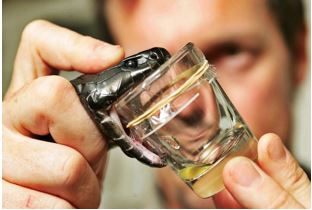Snake Venom : A Concise Knowledge
Keywords:
Snake venom, snake bite, viper venomAbstract
There are more than 3,000 species of snakes on the planet and they're found everywhere except in Antarctica, Iceland, Ireland, Greenland, and New Zealand. About 600 species are venomous, and only about 200 seven percent are able to kill or significantly wound a human. Of the terrestrial venomous snakes, four species are widespread on the Indian mainland – also known as the “big four.” They include spectacled cobra (Naja naja), common krait (Bungarus caeruleus), Russell's viper (Daboia russelii), and saw-scaled viper (Echis carinatus). Snake venom is a highly toxic saliva containing zootoxins that facilitates in the immobilization and digestion of prey. This also provides defense against threats. Snake venom is injected by unique fangs during a bite, whereas some species are also able to spit venom. simplified historical overview is that viper venoms are predominately hemorrhagic and elapid venoms neurotoxic. While this simplification holds for many species there are a number of examples of vipers causing neurotoxicity and elapids causing bleeding disturbances.
Downloads
References
Krishnan Vij. Textbook of forensic medicine and toxicology principles and practice. 5th edition, 2011, Total page 593,PP481.
Reddy KS Narayan, OP Murty. The Essentials of forensic medicine and toxicology. 2014, Total page 689,PP561.
Datta K Animesh et al. Snake bite, Snake venom, anti-venom and herbal antidote, International Journal of research in Ayurveda and Pharmacy. 2011;2(4);1060-1067.
Karlsson E. Chemistry of protein toxins in snake venoms. In Snake venoms. Springer Berlin Heidelberg. 1979, pp159-212.
Lauridsen L. P., Laustsen, A. H., Lomonte, B., & Gutiérrez, J. M. (2017). Exploring the venom of the forest cobra snake: Toxicovenomics and antivenom profiling of naja melanoleuca. Journal of Proteomics, 150 (Complete),98-108. doi:10.1016/j.jprot.2016.08.024















